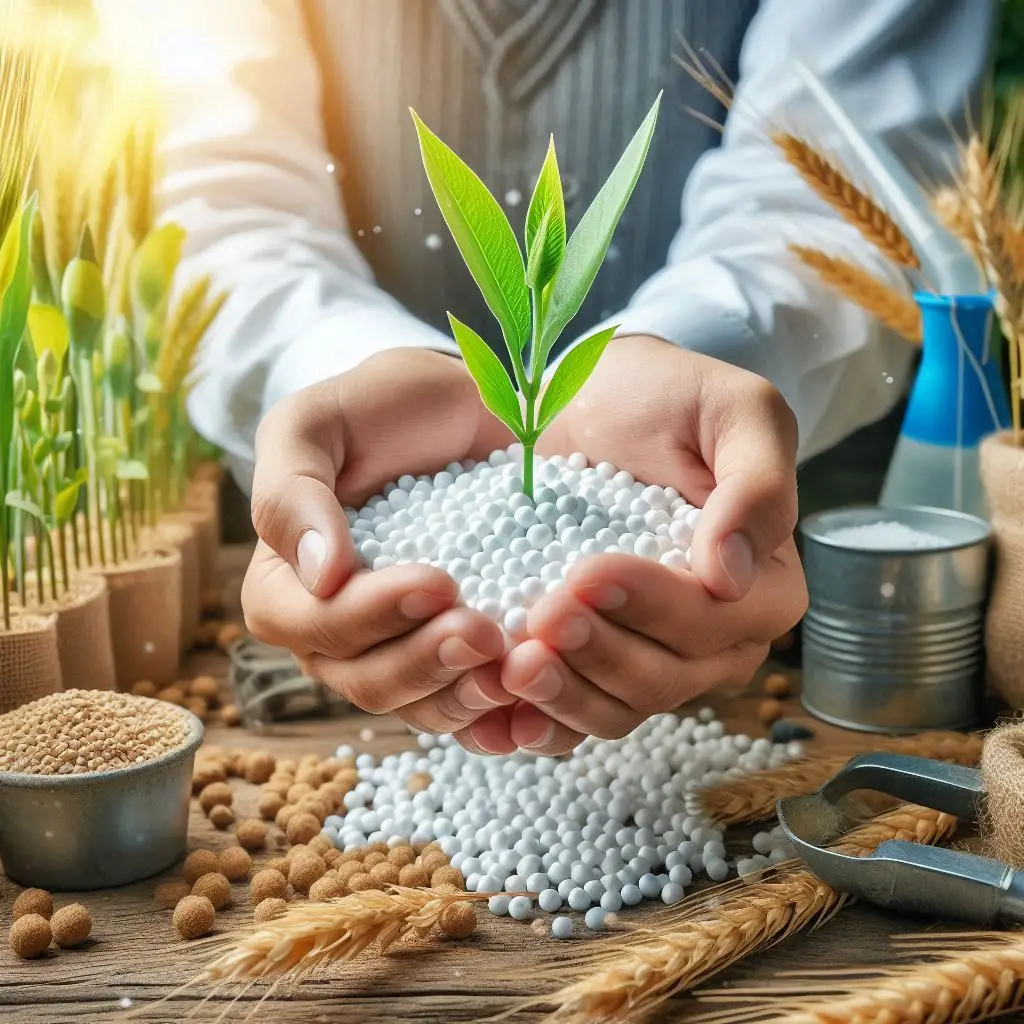
Urea Nitrogen for Plants: Benefits, Uses & Fertilizer Guide
Short Intro:
Urea nitrogen is a key nutrient driving plant growth and agricultural productivity. Understanding its benefits and proper application ensures healthier crops and sustainable yields.
What You’ll Learn:
- How urea nitrogen supports plant growth and development
- Key benefits of urea fertilizer for various crops
- Best practices for urea fertilizer application
- Environmental considerations and mitigation techniques
- Methods to optimize yield using urea-based fertilizers
1) Introduction: Urea Nitrogen for Plants
SEO Snippet: Urea nitrogen is vital for plant growth, supporting protein synthesis, photosynthesis, and overall crop health.
Urea nitrogen for plants is a fundamental nutrient that underpins modern agricultural productivity. Rich in nitrogen, urea provides plants with the essential building blocks needed for protein synthesis, enzyme activity, and photosynthesis. Its adaptability allows use across a wide range of crops, soil types, and farming practices.
Proper application ensures maximum crop health while minimizing environmental risks, such as nitrogen leaching or ammonia volatilization. The following sections explore the benefits, uses, and best practices for urea nitrogen in agriculture.
Keywords: urea nitrogen fertilizer, plant nutrition, nitrogen source, sustainable agriculture, crop yield, foliar application
External Links: FAO Nitrogen Facts | ScienceDirect on Urea Fertilizers
2) Urea Nitrogen for Plants
SEO Snippet: Urea nitrogen provides essential nitrogen to plants, supporting growth, root development, and productivity.
Urea nitrogen is a critical component of plant nutrition. It delivers nitrogen in an accessible form that is rapidly converted in the soil to ammonium and nitrate ions for plant uptake. This conversion ensures a steady nutrient supply for optimal growth.
The versatility of urea nitrogen allows application through soil incorporation, top dressing, or foliar spraying. Its accessibility makes it attractive for both small-scale farmers and large agricultural enterprises. However, excessive use can cause nitrogen leaching, groundwater contamination, or volatilization into the atmosphere. Employing urease inhibitors and precise timing can mitigate these environmental risks.
Keywords: nitrogen fertilization, ammonium nitrate, plant growth, foliar feeding, soil amendment, urease inhibitors, crop nutrition
External Links: Cropscience Urea Info
Novin Trades Market View and Forecast: Urea demand is expected to rise in key agricultural markets due to its cost-effectiveness and high nitrogen content.
3) Urea Fertilizer for Plants
SEO Snippet: Urea fertilizer supplies about 46% nitrogen, enhancing photosynthesis, protein synthesis, and plant development.
Urea fertilizer for plants is the most widely used synthetic nitrogen source in modern agriculture. Containing approximately 46% nitrogen, it efficiently supports protein synthesis, enzyme production, and chlorophyll formation—critical factors for photosynthesis and overall plant health.
The fertilizer’s adaptability allows application across vegetables, fruits, cereals, and ornamentals. It can be applied directly to soil, incorporated into irrigation systems, or used as a foliar spray. Proper management reduces nitrogen loss through volatilization or runoff, ensuring environmental protection while optimizing yield.
Keywords: nitrogen fertilizer, urea granules, hydrolysis process, crop nutrition, sustainable farming, plant development
External Links: IFDC Fertilizer Guidelines | Agronomy Journal Urea Studies
4) Urea Fertilizer Benefits for Plants
SEO Snippet: Urea fertilizer enhances crop growth, yield, and nutrient efficiency through high nitrogen availability.
The primary benefits of urea fertilizer for plants stem from its rich nitrogen content, supporting amino acid formation, protein synthesis, and chlorophyll production. These processes drive robust vegetative growth, higher biomass, and improved crop quality.
Urea fertilizer’s versatility allows use on a wide range of crops and soils. Applications can be via top dressing, foliar spraying, or fertigation. Its cost-effectiveness reduces the quantity needed for optimal nutrition while promoting sustainable agriculture. Responsible application mitigates risks like nutrient runoff or atmospheric ammonia release.
Keywords: crop yield improvement, nitrogen efficiency, foliar application, sustainable crop production, urea advantages
External Links: FAO Fertilizer Management
5) Urea Fertilizer Uses for Plants
SEO Snippet: Urea fertilizer is applied to soil, foliar sprays, and irrigation systems to optimize plant growth and yields.
Urea fertilizer uses for plants extend to multiple methods including broadcasting, side-dressing, and fertigation. Broadcasting evenly distributes granules across soil surfaces, while side-dressing targets roots. Fertigation mixes urea with irrigation water, providing consistent nutrient delivery directly to the root zone.
This flexibility ensures optimal nitrogen availability for enzyme production, chlorophyll formation, and vegetative growth. Correct timing and dosage reduce volatilization and nitrogen loss, safeguarding both yield and the environment. Urea’s wide applicability makes it essential for modern farming systems seeking productivity and sustainability.
Keywords: fertigation, nitrogen application, soil amendment, plant protein synthesis, sustainable farming practices, crop productivity
External Links: ScienceDirect on Fertilizer Methods
Novin Trades Market View and Forecast: Global urea markets remain stable, with increasing demand in high-yield cereal and vegetable production regions.
6) Conclusion: Urea Nitrogen for Plants
SEO Snippet: Urea nitrogen enhances plant growth, crop yields, and sustainable farming when used responsibly.
Urea nitrogen for plants is indispensable for modern agriculture. It provides readily available nitrogen, supporting protein synthesis, chlorophyll production, and overall plant development. Its versatility in application methods ensures adaptability across crops and farming systems. By combining proper dosage, timing, and mitigation measures, urea fertilizer can enhance yields while minimizing environmental impact.
For further insights on fertilizers and agricultural best practices, explore NovinTrades Reportages.
Keywords: nitrogen fertilization, crop yield optimization, sustainable agriculture, urea management, plant growth enhancement
External Links: FAO Fertilizer Resources | NovinTrades Fertilizer Insights
About NovinTrades
As part of its mission, NovinTrades offers a dedicated Reportage section where businesses, brands, and professionals can publish in-depth sponsored articles, analyses, and thought-leadership pieces. These reportages are SEO-optimized for maximum visibility and long-term engagement.
📍 Explore more at NovinTrades Reportages
📣 Join us on Telegram: https://t.me/novintrades

